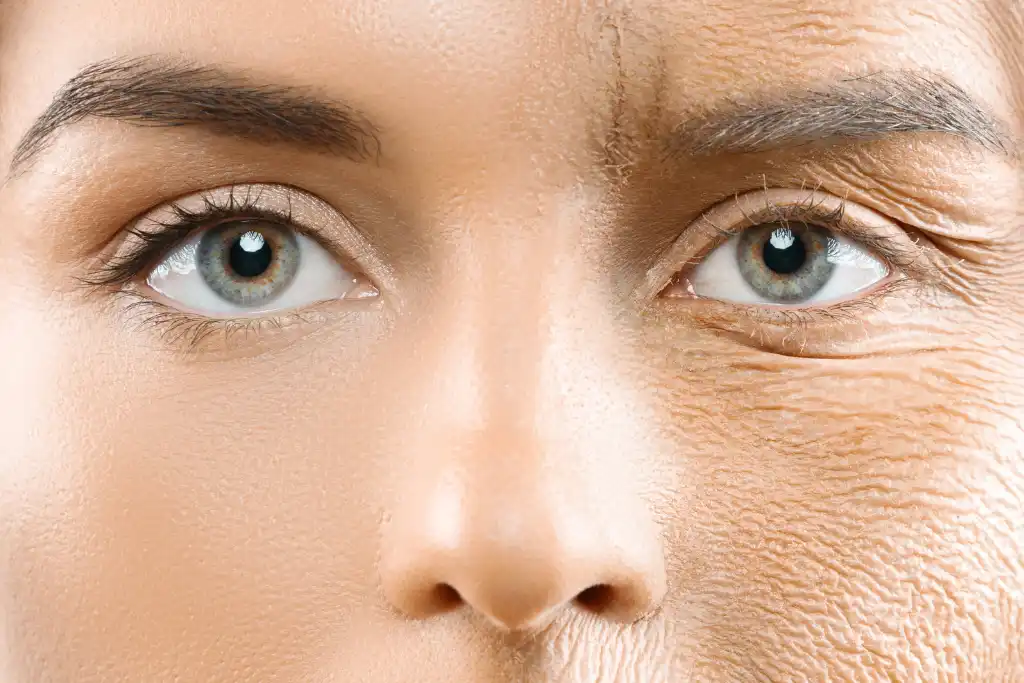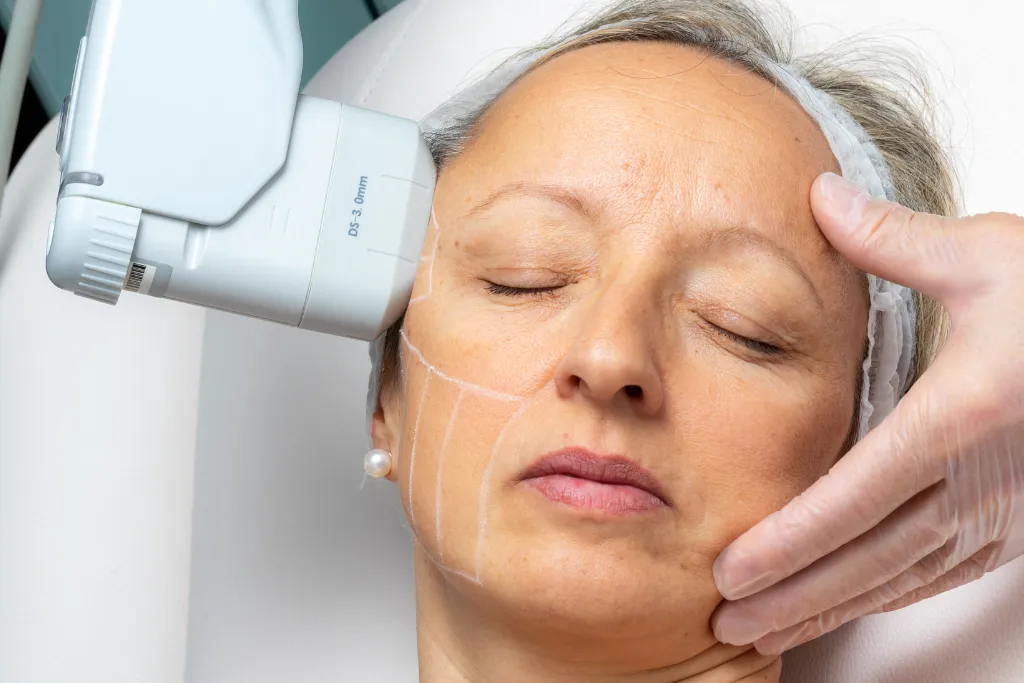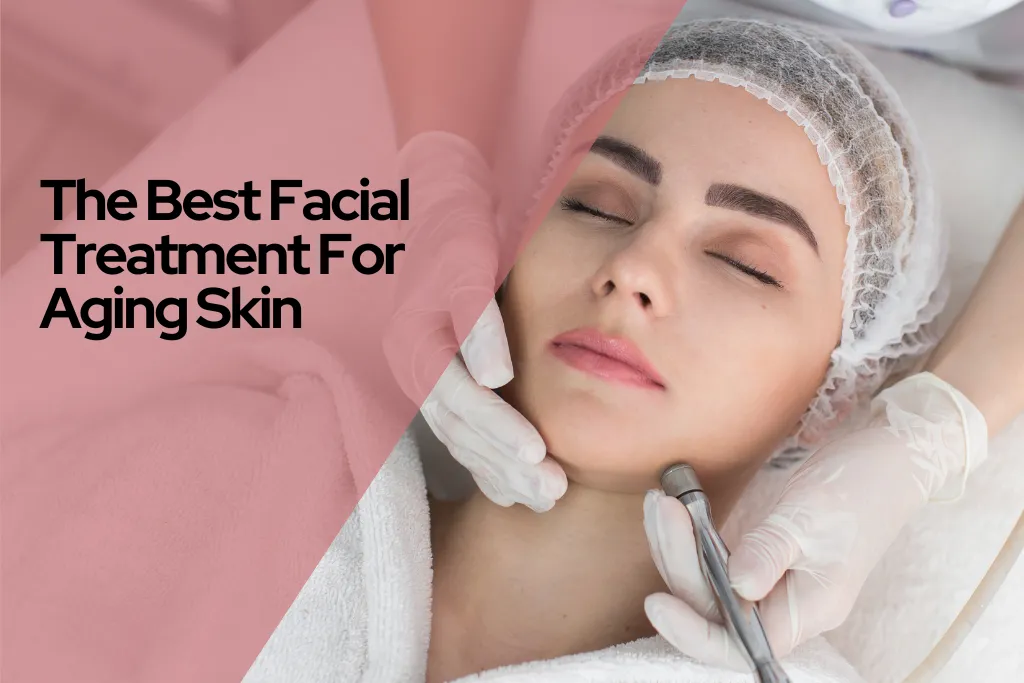As we age, our skin loses its youthful glow and elasticity. That’s where anti-aging facials come in. These targeted treatments address common signs of aging, aiming to leave your face looking refreshed and rejuvenated. But with so many options available, how do you choose the right one?
This guide will explore how skin ages, delve into the different types of anti-aging facials, and unveil the most effective treatments. We’ll also answer those burning questions: When should you consider facials, and how can you maintain your youthful results?
Let’s dive into the world of anti-aging facials and discover the path to a radiant complexion.
What Is An Anti-Aging Facial Treatment?
An anti-aging facial treatment is a comprehensive cosmetic facial designed to combat the visible signs of aging and promote a more youthful, radiant complexion. These treatments typically involve a multi-step process that combines various techniques and products to target specific aging concerns.
The treatment often begins with a deep cleansing and exfoliation to remove dead skin cells and impurities, preparing the skin for better absorption of beneficial products. This is followed by specialized facial massages that improve circulation, promote lymphatic drainage, and enhance product absorption.
Anti-aging serums and creams containing active ingredients like retinoids, vitamin C, hyaluronic acid, and antioxidants are then applied to address issues such as fine lines, wrinkles, age spots, and uneven skin tone. Facial masks, ranging from hydrating to clay-based, are also used to nourish and rejuvenate the skin.
Some anti-aging facials incorporate advanced techniques like LED light therapy, which can stimulate collagen production, reduce inflammation, and improve skin texture. Additionally, extractions may be performed to clear clogged pores, contributing to an overall brighter and smoother complexion.
These treatments are tailored to each individual’s specific skin concerns and may be combined with other professional treatments, such as chemical peels or micro needling, for enhanced anti-aging results. The goal is to restore a youthful, glowing appearance by addressing multiple signs of aging in a comprehensive and targeted manner.

How Does The Skin Age?
The skin ages due to a combination of intrinsic and extrinsic factors. Here’s an overview of how the skin ages:
Intrinsic Aging
- Cellular changes: As we age, the skin cells (fibroblasts) become less efficient at producing collagen and elastin, which are responsible for skin’s firmness and elasticity.
- Hormonal changes: A decrease in estrogen levels during menopause can lead to dryness, thinning of the skin, and a loss of elasticity.
- Decreased cell turnover: The natural process of shedding old skin cells and replacing them with new ones slows down, resulting in a dull complexion.
Extrinsic Aging
- Sun exposure: Ultraviolet (UV) radiation from the sun is the primary cause of extrinsic skin aging, known as photoaging. UV rays damage collagen and elastin fibers, leading to wrinkles, age spots, and rough texture.
- Environmental factors: Pollution, smoking, and exposure to free radicals can accelerate the aging process by causing oxidative stress and inflammation in the skin.
- Lifestyle factors: Poor diet, lack of sleep, and stress can also contribute to premature skin aging.
As the skin ages, several visible changes occur:
- Fine lines and wrinkles appear, especially around the eyes, mouth, and forehead.
- Skin becomes thinner and loses its firmness and elasticity, leading to sagging and loss of volume.
- Age spots or hyperpigmentation may develop due to sun exposure and melanin production.
- Skin becomes drier due to a decrease in oil production and moisture retention.
- Blood vessels become more pronounced, causing a ruddy complexion.
Types Of Anti-Aging Facials
There are various types of anti-aging facial treatments available, each targeting different concerns and using different techniques and products. Here are some common types of anti-aging facials:
Hydrating Facials
These facials focus on replenishing moisture and hydration in the skin, which can help plump up fine lines and wrinkles. They often include ingredients like hyaluronic acid, ceramides, and plant-based oils.
Vitamin C Facials
Vitamin C is a potent antioxidant that helps protect skin from free radical damage, brightens the complexion, and boosts collagen production. These facials use vitamin C-rich serums and masks.
Retinol Facials
Retinol is a powerhouse anti-aging ingredient that helps increase cell turnover, stimulate collagen production, and minimize the appearance of fine lines and wrinkles.
Enzyme Facials
These facials use fruit enzymes or other natural enzymes to gently exfoliate and remove dead skin cells, revealing a brighter, smoother complexion.
Oxygen Facials
Oxygen facials use pressurized oxygen and nutrient-rich serums to help rejuvenate the skin, promote collagen production, and improve overall radiance.
LED Light Therapy Facials
These facials use different wavelengths of LED light to target specific skin concerns. Red light can help reduce inflammation and stimulate collagen, while blue light can kill acne-causing bacteria.
Microcurrent Facials
Microcurrent technology uses low-level electrical currents to stimulate facial muscles, improve circulation, and promote collagen and elastin production, resulting in a more lifted and toned appearance.
Ultrasound Facials
These facials use ultrasound technology to deliver anti-aging serums deep into the skin, improving absorption and promoting collagen production.
Many anti-aging facials combine several of these techniques and products for a comprehensive approach to addressing multiple signs of aging, such as fine lines, wrinkles, hyperpigmentation, and loss of firmness.
When Should You Start Getting Anti-Aging Facials?
There is no definitive age when one should start getting anti-aging facials, as it depends on various factors such as skin type, lifestyle, and personal preferences. However, here are some general guidelines:
- Late 20s: Many skincare experts recommend starting anti-aging treatments, including facials, in your late 20s. This is when the natural aging process begins, and the production of collagen and elastin in the skin starts to slow down gradually.
- Early 30s: If you haven’t started already, your early 30s are a good time to incorporate anti-aging facials into your skincare routine. This can help address early signs of aging, such as fine lines, uneven skin tone, and loss of radiance.
- Mid-30s and beyond: As you approach your mid-30s and beyond, anti-aging facials become increasingly important. These facials can help combat more visible signs of aging, such as deeper wrinkles, age spots, and sagging skin.
It’s important to note that prevention is key when it comes to anti-aging skincare. Starting anti-aging facials earlier can help maintain the skin’s youthful appearance and delay the onset of more severe signs of aging.
Additionally, factors like sun exposure, stress levels, and lifestyle habits can accelerate the aging process, making it beneficial to start anti-aging treatments sooner rather than later.
Ultimately, the decision to start anti-aging facials should be based on your individual skin concerns, goals, and the advice of a qualified skincare professional.

Which Of Our Anti-Aging Facial Treatments Are Right For You?
Choosing the right anti-aging facial treatment depends on several key factors. First, identify your skin type, which could be dry, oily, or sensitive. Then, consider your main goals, such as smoothing fine lines, restoring firmness, or enhancing skin brightness.
Different treatments cater to various concerns:
- Chemical Peels: It removes dead skin cells, unveiling fresher, smoother skin.
- Microdermabrasion: Helps to exfoliate the skin, helping to lessen sun damage and minor age spots.
- Laser Therapy: This uses focused light to minimize wrinkles and even out skin tone.
- Injectables: It is like Botox and Fillers effectively fill in wrinkles or relax facial muscles for a smoother appearance.
- LED Light Therapy: It employs light waves to stimulate collagen production and reduce inflammation, promoting a healthier glow.
Consulting a skincare professional can provide personalized recommendations based on your skin’s unique needs. Remember, each person’s skin responds differently, so a treatment that works well for one person might not be the best option for another.
How Do I Maintain A Youthful Face After A Cosmetic Procedure?
Maintaining a youthful face after a cosmetic procedure involves a two-pronged approach like protecting your results and promoting healthy aging from within. Here are some key strategies:
Sunblock Is Your Bff
Sunscreen (SPF 30+) is a must every day, rain or shine. The sun damages your skin, causing wrinkles and dullness. Hats and sunglasses are great extras.
Pamper Your Skin
Wash your face twice a day with a gentle cleanser made for your skin type. Skip harsh scrubs and anything irritating. Moisturize daily with a product that suits your skin, keeping it plump and glowy. Drinking plenty of water helps too!
Healthy Habits Are Your Allies
Eat a balanced diet with fruits, veggies, and whole grains to give your skin the nutrients it needs. Aim for 7-8 hours of sleep to avoid dull skin and wrinkles. Find ways to manage stress, like yoga or walks in nature. Talk to your doctor about antioxidant serums or supplements to fight skin damage.
Stay In Touch With Your Doctor
Go to all your follow-up appointments so they can check on you and answer any questions. Some procedures need touch-ups to maintain the results, so discuss a plan with your doctor beforehand.
Conclusion
The quest for youthful skin through anti-aging facials involves understanding the skin aging process, choosing the right treatment based on individual needs, and adopting a holistic approach to skincare. Starting early, protecting skin post-treatment, and maintaining healthy habits are crucial steps. Consultation with skincare professionals ensures personalized care for a radiant, age-defying complexion.

